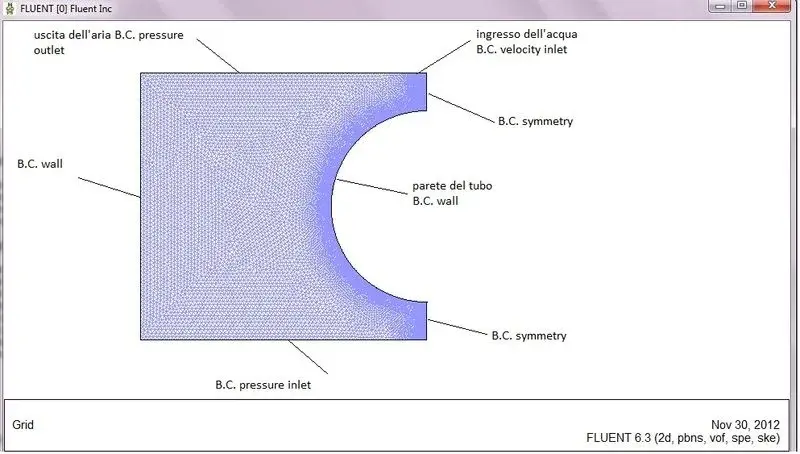walterb
Guest
Good morning to all, I am a student of mechanical ing. who for some time has taken care of cfd.
I should model a free fur in a system formed by two vertical pipes placed in communication by a circumferential compass: in the pipeline the fluid goes up and then tracise into the pipe when it meets the asola. above the thermovector fluid the volume is filled with a gas.
now : I impose an inlet velocity and a pressure outlet on the entry and exit sections of the thermovector fluid, and a pressure outlet on the section that delimites the fluid domain above, because I want the gas not to pressurize but to the ambient pressure; I have now achieved unrealistic results and most of the time the calculation diverges. I have problems with overcoming the limit for the turbulent viscosity ratio, but my mesh(gambit) has aspect ratio<9 and equiangleskew<0.4.
I tried to compute with second-order methods but it doesn't improve anything.
Would anyone give me any ideas or advice?
thanks for the collaboration.
walter
I should model a free fur in a system formed by two vertical pipes placed in communication by a circumferential compass: in the pipeline the fluid goes up and then tracise into the pipe when it meets the asola. above the thermovector fluid the volume is filled with a gas.
now : I impose an inlet velocity and a pressure outlet on the entry and exit sections of the thermovector fluid, and a pressure outlet on the section that delimites the fluid domain above, because I want the gas not to pressurize but to the ambient pressure; I have now achieved unrealistic results and most of the time the calculation diverges. I have problems with overcoming the limit for the turbulent viscosity ratio, but my mesh(gambit) has aspect ratio<9 and equiangleskew<0.4.
I tried to compute with second-order methods but it doesn't improve anything.
Would anyone give me any ideas or advice?
thanks for the collaboration.
walter

